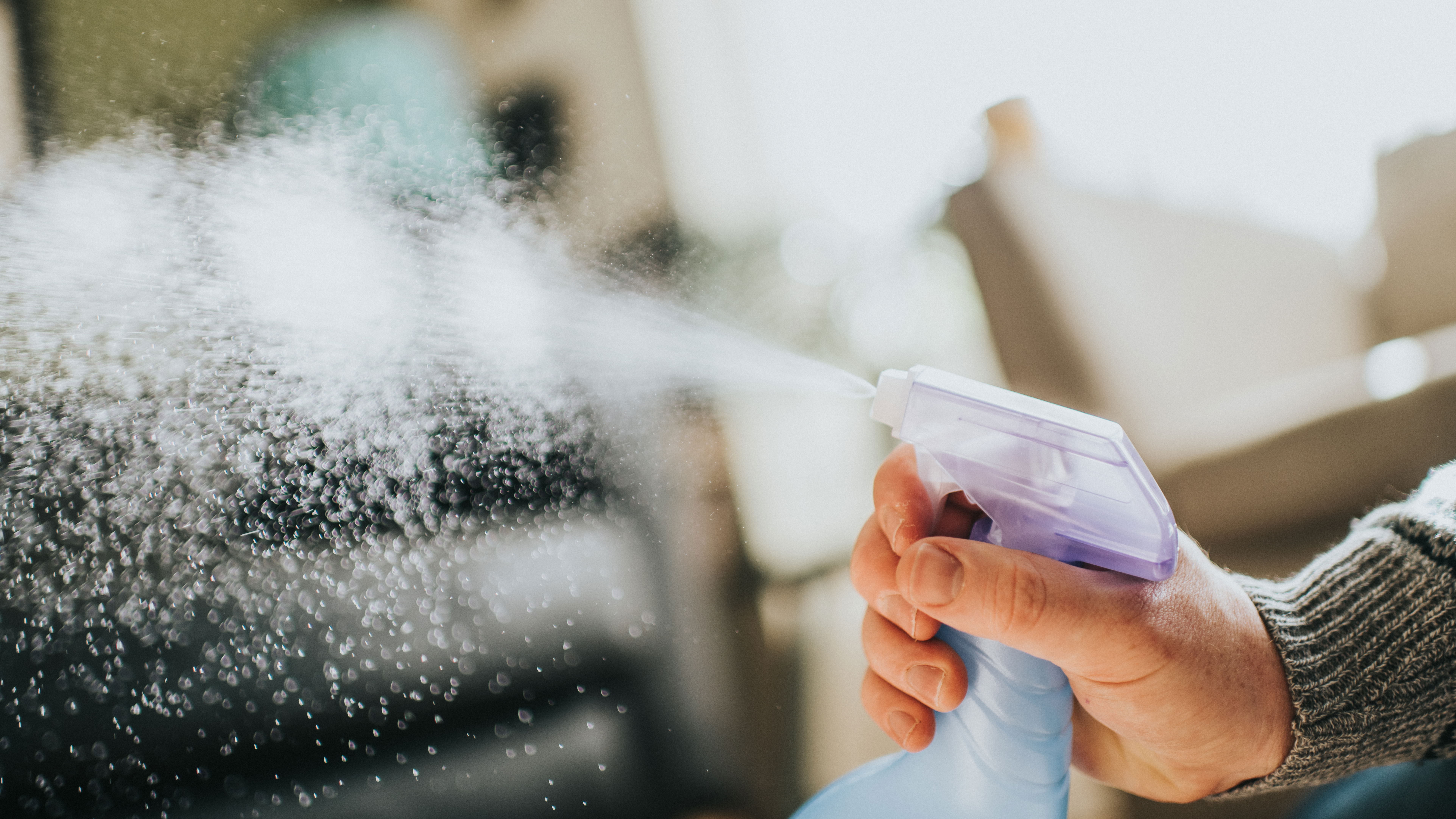Coronavirus concerned? Bacteria phobic? This is where most germs lurk at home
Someone in your house got a virus? Keeping your home clean is the first line of defence – you’ll be surprised (and horrified) to discover where the most germs can be found


While we're all (to varying degrees) worried about Coronavirus – and many of us are working from home – it's worth knowing where to concentrate our cleaning efforts to avoid the spread of the virus – and others.
You might think that the dirtiest place in your home is your toilet, but studies have shown that this isn’t the top location for germs. In fact, the kitchen actually beats the bathroom when it comes to contamination: the warm, moist environment is an ideal breeding ground for bacteria.
That’s not to say that you won’t find bacteria in the (warm, moist) bathroom, of course – and you’ll need to brace yourself for one of the unexpected locations where the germs breed in there.
So, which are the places where bacteria lurk? We’ve got the hit parade below, and if you want more on cleaning your home, find more places that never get cleaned but should in our guide. Head over to our cleaning hub page for expert advice, brilliant buys and clever hacks, too.
1. Wipe down the TV remote, keyboard, phone... etc etc
The most germ-ridden hotspots include items such as the TV remote, light switches, door handles, your mobile phone, keyboard, and the desk in your office, all which are dirtier than your toilet seat (we didn't just make this up, honest). The reason? Phone and remotes come in regular contact with your hands, which you should also wash all the time, with soap, especially if someone in the house has a cold/fever.
2. Feeling unwell? Change your bed
Got a cold or virus? Change your bedding regularly and you'll not only be hot washing away germs, you'll feel better in crisp new linen, too.
Allergy sufferer? Over the winter, your bedding would've absorbed a lot of sweat and dead skin cells. Sounds gross, but it's true, and if you don't wash your bedding in the lead up to spring, you are inviting dust mites to breed in your bedding in their millions.
Get small space home decor ideas, celeb inspiration, DIY tips and more, straight to your inbox!
The result? Skin rashes and allergies, nasal congestion, and poor quality sleep. So, pop your bedding in a warm or hot wash. If your washing machine is not big enough, do it at the launderette. Find out how to wash pillows in our guide.
3. Washing up sponges are germ hotspots
You think you’re cleaning the plates, but in fact you’re wiping them with a product that’s harbouring bacteria. In one study, billions of bacteria were found on and within washing up sponges. Horrible, right, especially if the person doing the washing up has a hideous cold or a fever...
Sponges are the sort of habitat on which bacteria thrive as they’re porous and usually damp. No need to panic, though. There’s a simple solution to bacteria-harbouring washing-up sponges. Replace weekly and you’ll keep your kitchen cleaner. And better hygiene isn’t a cost burden – washing-up sponges need only cost you pennies each. Oh, and don’t use them to wipe down surfaces, which will spread the bacteria around.
4. Toothbrushes harbour viruses and bacteria
Sorry, but this article isn’t getting any less grim. Toothbrush bristles pick up bacteria from your mouth, but also – brace yourself – airborne bacteria from the loo.
Armed with this terrible knowledge, you’ll want to do something. As for the bacteria in your mouth, they’re a fact of life, so don’t panic. However, bacteria from the loo are definitely an issue you should address.
Our advice? Rinse your brush after use, and store it upright and so it’s not touching anyone else’s brush, away from the toilet and preferably behind the door of a cabinet. Secondly, close the WC seat before flushing. Make sure you also change your toothbrush – or the head of an electric toothbrush – every three months or earlier if bristles are frayed. Find the best electric toothbrushes at the best prices in our buyer's guide.
5. Kitchen sinks aren't as clean as you think
Again, who’d have thought it? But consider that you clean the knives and cutting boards that have been in contact with raw meat in there, and wash veggies and fruit over it (yes, vegetarians and vegans, you have to be sink-hygiene conscious, too), and you’ll see why this is a bacteria hotspot.
So, clean the sink after you’ve been preparing raw ingredients, especially around the drain. Use a cleaner that’s suitable for the type of sink you have – stainless steel, composite and so on – and dry it afterwards. Don’t forget to clean the taps as well.
6. The kitchen bin is a bacteria breeding ground
The kitchen bin lid is home to – wait for it – faecal bacteria. The lesson from this is that you should clean the bin lid, of course, with an antibacterial spray, but also make sure you – and the rest of the household – are washing and rinsing your hands properly to avoid spreading bacteria to the surfaces you touch.
7. Kitchen worktops are germ ridden
Your kitchen’s worksurfaces are also a prime location for bacterial contamination, which definitely isn’t desirable in a food preparation area. Then again, there’s plenty you can do to tackle this home horror.
Make sure you’re using chopping boards so raw ingredients don’t come into contact with the worktop. You should have two boards: one for raw meat and one for the rest. Don’t wipe down the surfaces with a dishcloth, either, which has the same bacteria-harbouring properties as a washing-up sponge (see 1, above).
Clean worktops with hot water and detergent, using kitchen towel you can throw away afterwards to wipe.

Sarah is a freelance journalist and editor writing for websites, national newspapers, and magazines. She’s spent most of her journalistic career specialising in homes – long enough to see fridges become smart, decorating fashions embrace both minimalism and maximalism, and interiors that blur the indoor/outdoor link become a must-have. She loves testing the latest home appliances, revealing the trends in furnishings and fittings for every room, and investigating the benefits, costs and practicalities of home improvement. It's no big surprise that she likes to put what she writes about into practice, and is a serial house revamper. For Realhomes.com, Sarah reviews coffee machines and vacuum cleaners, taking them through their paces at home to give us an honest, real life review and comparison of every model.